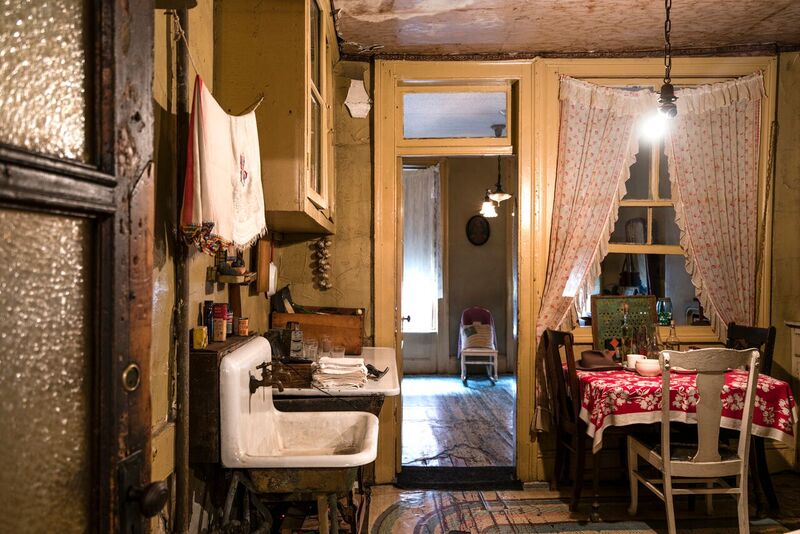Blog Post #4: Sweatshop Experiences
Visiting the tenement museum was a great experience to have last Wednesday. Never before had I heard of tenements but after seeing them I was amazed. They were just regular apartments that were occupied by immigrants but I never knew that immigrants used them to operate sweatshops. This amazed me because it showed me how relentless and determined people can be when they want to provide for their family. Operating a workshop from your home is dangerous. Anything can occur out of the blue moon such as equipment issues or a child issue and those are just a couple examples. The article Sweatshop Subjectivity and The Politics of Definition and Exhibition states, “Inspectors relied on their sensory responses. Citing odors as evidence, inspectors united fears of poverty, pestilence, and promiscuity in their definition of the sweatshop. Clothing produced in filthy shops by diseased workers could infect consumers and male and female immigrants working in close quarters were becoming an enfeebled, immoral race.”
Operating a workshop from your home is dangerous. Anything can occur out of the blue moon such as equipment issues or a child issue and those are just a couple examples. The article Sweatshop Subjectivity and The Politics of Definition and Exhibition states, “Inspectors relied on their sensory responses. Citing odors as evidence, inspectors united fears of poverty, pestilence, and promiscuity in their definition of the sweatshop. Clothing produced in filthy shops by diseased workers could infect consumers and male and female immigrants working in close quarters were becoming an enfeebled, immoral race.”
While that can be said for sweatshops in the 1800s, things are different in the world today. Sweatshops are different today than they were back then because sweatshops to people in the 1800s was just being in a small room surrounded by lots of equipment with other people occupying the room. The article states, “ The work is done under the eyes of task-masters, who rent a small room or two in the rear part of an upper floor of a high building, put in a few sewing machines, a stove suitable for heating irons, and then hire a number of men and women to work for them.” Even in those times that was considered to be a form of slavery because of the work conditions people were subjected to, yet no one did anything about it. Which led to people continuing on with the process. That was until 1994, where the United States General Accounting Office gave a definition for a sweatshop. Sweatshops were defined as, “‘a workplace’”that violates more than one federal or state labor law governing minimum wage and overtime, child labor, industrial homework, occupational safety and health, workers compensation, or industry regulation.”
Lots of these workers were immigrants who did not have the opportunity or resources for anything better. They came from another country clueless to the environment and the struggles that were ahead of them because they were foreigners. This connects all immigrants because they are subjects to the same conditions. Working in the sweatshop conditions is illegal if they face conditions that are below the human standard, such as not being paid minimum wage. Yet, they are clueless to this fact because they do not possess the resources to learn this information when they first arrive in this country. So they instead break their backs and teach their children the value of having an education or pursuing anything greater than working some factory for someone who underappreciated them. Immigrants from the 1800s-2000s face the same conditions, which I believe connects us. But I believe there is a chance for sweatshops to be good. All a sweatshop needs to be good in my opinion is for someone that is someone in charge that actually cares about their workers. When you have an employer who cares about you, they take care of you, so you can help take care of them and their business.
Bender, Daniel. “Sweatshop Subjectivity and the Politics of Definition and Exhibition.” International Labor and Working-Class History, no. 61 (2002): 13-23. Accessed February 19, 2020. www.jstor.org/stable/27672769.
Gannon, Devin. “Tenement Museum Will Stay Open Late on Thursday Nights for Special Tours and Programs.” 6sqft, 24 Sept. 2018, www.6sqft.com/tenement-museum-will-stay-open-late-on-thursday-nights-for-special-tours-and-programs/.
Intern. “American Sweatshops.” Boston Review, 1 Mar. 2019, bostonreview.net/gordon-american-sweatshops.